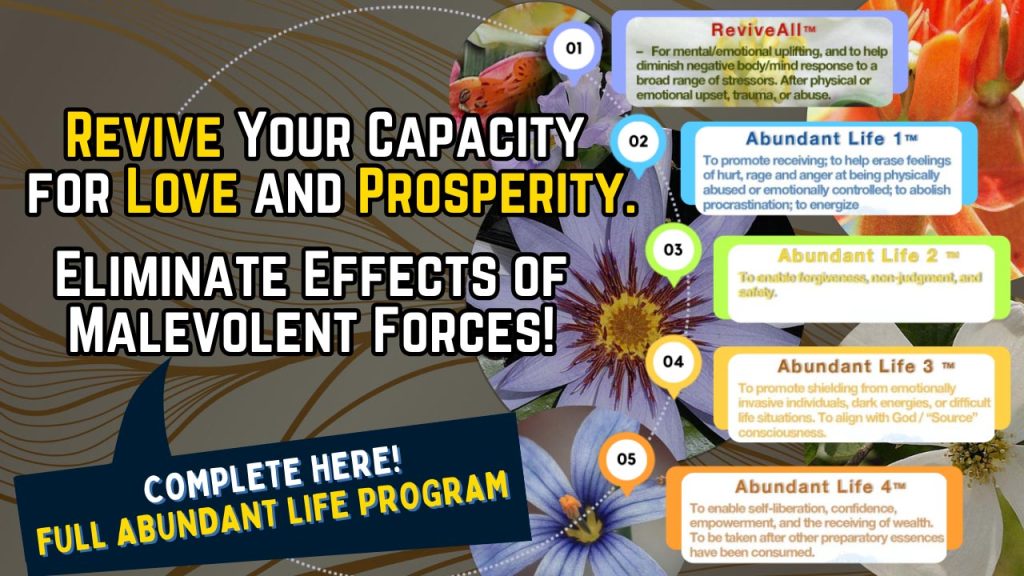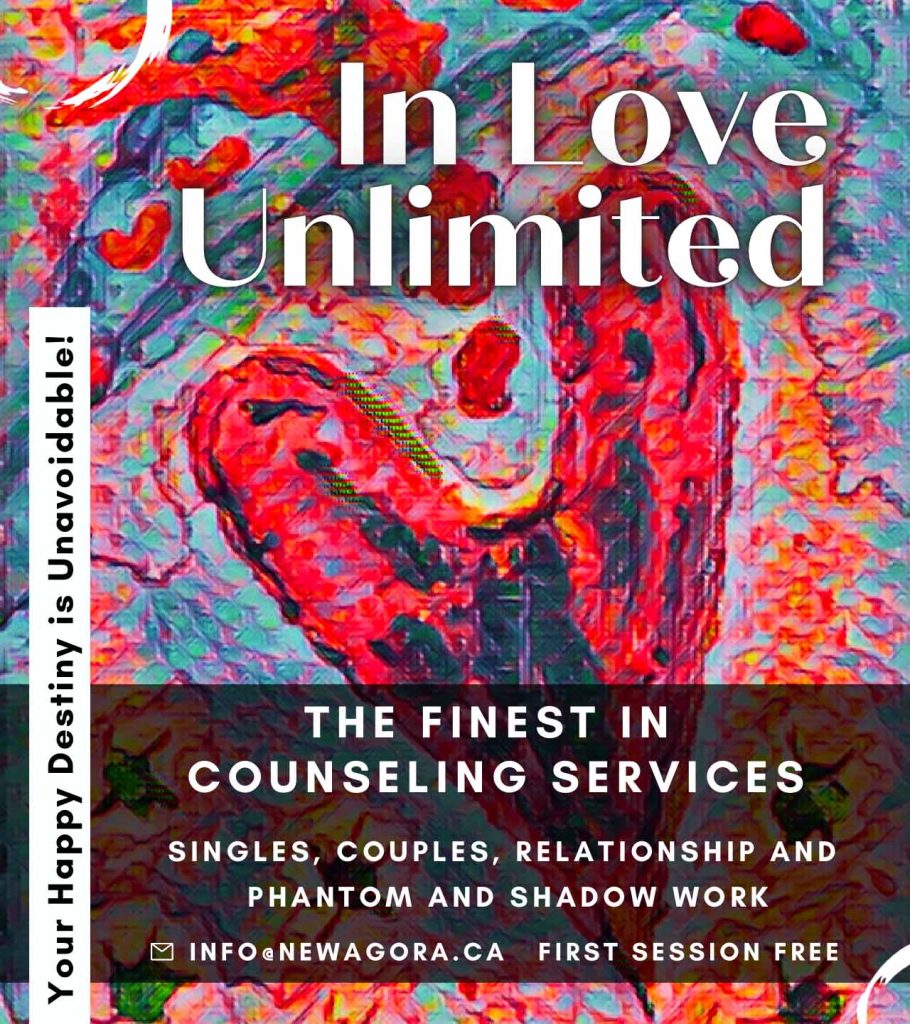Creating Reality from Thought:
Blowing the Whistle/ Chapter 10
This is Chapter 10 in an online book: ‘Blowing the Whistle on Enlightenment: Confessions of a New Age Heretic,’ by Bronte Baxter.
Lots of questions surround any discussion about creating reality (or manifesting desires) by using what is popularly called The Law of Attraction. What is this philosophy – something of genuine value or another New Age spiritual detour? Is it selfish and superficial or actually healing and useful? Can it help the state of the world? Doesn’t it contradict the Law of Karma? If the Law of Attraction is real, why do affirmations seldom work? Is there a more effective way to create reality through thought than the simple advice given in “The Secret” DVD?
Let’s look at all these questions and start with a definition. The Law of Attraction is a law of nature that says whatever you think, you get: our thoughts determine what happens to us in the physical outer world called “reality.” Is this valid theory or New Age nonsense?
The theory is a sound one. The Law of Attraction operates at the heart of personal self-empowerment. It’s also the key to unlocking new possibilities in the universe. As such, it’s a powerful tool for defeating the New World Order and creating a magnificent world.
To understand why consciously utilizing this law offers so much, we must first understand the relationship of thoughts to matter, because the Law of Attraction is a “mind-over-matter” philosophy. So let’s get philosophical for a moment.
Thought creates outer reality for one reason: because thought is consciousness vibrating, and that’s all physical matter is, too. The difference between thought and matter is only the level of density. They’re two layers of the same cake. Matter is just a slightly slower vibration of consciousness.
The analogy of a fan demonstrates the difference in frequency between thought and the physical world. When a fan moves slowly, you clearly see its distinct blades. They are unquestionably solid. They block out your view of anything positioned behind them. But when you turn the fan on high, suddenly the blades become blurry. Earlier perceived as solid, they seem to grow translucent, almost invisible. You can see objects through and behind the fan, things that before were hidden by the solidity.
Physical reality is like a fan on low-speed. It operates on a slow vibration, which makes it appear defined and dense. Thought is like a fan on high-speed. The higher frequency makes this level of reality fluid and invisible to the senses, but it is actually the same reality as matter, only vibrating faster.
Another analogy is H2O. Ice, water and vapor are the same substance expressing differently. One expression is solid and dense, another is fluid and without boundaries, while a third is gaseous and practically invisible. Consciousness, too, has layers or levels: gross, subtler and subtlest. Thought is a manifestation at a subtle level. Matter is a gross manifestation of the same thing.
Quantum physics has discovered that matter is not solid, in spite of its appearance being so. Matter consists of atoms, which are not combinations of particles and wave vibrations as scientists once believed. It turns out, atoms are pure vibration. So the physical world is pure vibration, appearing as solid the way fan blades appear solid when they slow down.
If matter is vibration, what is it that’s vibrating? Apparently, emptiness. But because it’s vibrating, that emptiness must be energy. And because it vibrates in the shape of organized forms, that emptiness must be intelligent. So intelligent energy is the stuff of creation, the power that underlies all things that exist. Consciousness is one name for that intelligent energy, and a subtle movement in consciousness is a thought. Thought results in changes in matter.
Here is an example, on a gross level, of how thought moves the material world. If I want a glass of water, I first have the thought to get a drink, then I walk to the sink, fill up a glass, and sip. The water, the glass, and my body – physical objects made up of atoms – all three shift and change a bit in response to the thought that I’m thirsty. Every minute of the day, thoughts shape physical reality. The world is a collection of atoms in various combinations, all of them pulsing in an intelligent energy field.
Besides moving reality around, thoughts can create reality “from scratch.” An example of this is inventing something that never has been thought or felt before: a symphony, a theory, a relationship …
If you consider any object or situation in creation, and think back in reverse to its origins, everything came together from a series of thoughts. Thoughts are pulsing consciousness, and matter is a denser, responsive expression of the same thing. Since thoughts and matter are two levels of one essence, they’re linked. Thought is the creative aspect, and matter the receptive aspect, of consciousness.
While it’s easy to see how thought moves matter in the case of a thirsty person reaching for a drink, the way thought moves the world is not always perceivable by the senses. If you desire a better job, and focus on having that with confident expectation, a better job will manifest in your life. You won’t see all the mechanics of how this transpires because so much takes place behind the scenes, like stage hands scurrying about behind the curtains of an ongoing play.
It isn’t magic when a scene changes in a dramatic production, nor is it accidental. When the scene we call reality changes, that isn’t magical or accidental either. It happens in response to the needs and desires of the actors on the stage of life, who directly influence what the “stage crew” (the dynamic substructure of the universe) is doing.
When you have a desire, that thought sends a pulse through the fabric of creation. Your desire vibrates the ether, the energetic consciousness, of which everything is made. That desire draws to you whatever is needed to materialize your thought, because thought is dynamic and magnetic. Then presto, the wish becomes an experienced reality. This power of consciousness, to desire and manifest thought into form, is what makes us co-creators with the Infinite.
Manifestation of thoughts into reality happens automatically, whether we intend it or not. Contemplate the people you know and how their outer lives reflect their attitudes (which are the sum of their thoughts). We can either create reality on autopilot, by thinking random thoughts indiscriminately, or we can elect to be conscious of how we think and make thought work for us to fulfill our most cherished desires.
But if thought moves and manifests physical reality, why do so many people have poor results when they try to consciously utilize the Law of Attraction? Why don’t more people get what they want from affirmations or from telling the universe their desires?
To understand the answer to that, we need to understand the nature of subconscious mind, because that is what fulfills or fails to fulfill our wishes. Subconscious mind is that deep level of ourselves where our individual self begins to link up with everything else. It is like the place beneath the ocean where all the islands touch the ocean floor – as Matthew Arnold poetically put it, “linking their coral arms beneath the sea.”
One person’s subconscious mind is connected to all other minds in that subterranean place, and when mind is stirred at that level, it sends a ping through the universe. It influences creation, because mind is the base or ground state of creation. That’s why connecting with subconscious mind, and persuading it to accept our desire, is essential to our wish becoming manifest as reality in the world.
When we have a strong or repetitive thought – especially a thought that’s emotionally charged – it is always recorded in the subconscious. We are constantly imprinting this powerful level of mind with every belief and attitude we pick up. Our past thoughts have programmed our subconscious. Every old impression is written and retained there.
When we have a desire that’s in harmony with our programming, deep mind accepts the desire without question because it is congruent with the program. The subconscious accepts this sort of desire without resistance, and spontaneously manifests the inner thought into exterior reality.
An example would be a successful business person starting a new product line about which he’s very excited. Because he trusts ability to succeed (i.e., he has a winning attitude engrained in his subconscious), the new product line will probably be a success. The thinker’s conscious desire, being in alignment with his subconscious belief, brings his idea into form on the material level.
Consider, by contrast, a person who has no confidence in himself . His talents may actually exceed those of the person in the first example, and he might have an idea for the identical product line. But in this person’s hands, the project will almost surely fail. Why? Because his subconscious mind holds the belief that he is a loser. It therefore sabotages his good intentions and efforts with quiet negative self-talk that creates fear or doubt. His conscious desire is not aligned with his subconscious beliefs about who he is, what he’s capable of, and how the universe works.
So the circumstances and opportunities never come together for this person that are requisite for success, in spite of affirmations he repeats, prayers he makes, time he puts in, or anything else. The ensuing failure of the project reinforces his original belief that he is hopeless. The next time he tries to accomplish something, his chances of success are even slimmer than last time he made an attempt.
This kind of mental self-sabotage keeps us all, to some degree or other, from having what we long for. We may be successful at manifesting certain desires, around which we carry no subconscious baggage, but most of us house programming that tells us we are limited, at least in certain areas of life.
We may be materially successful and affluent but always bat zero in personal relationships. Perhaps we have loving family and abundance, but can’t get rid of our asthma or some nagging extra pounds. Maybe we’re doing fine personally, but feel we’re helpless to solve the serious problems of the world. And almost everybody accepts that aging and death are necessary – few people even consider using thought to create eternal youth or physical immortality, because the collective programming is so deeply entrenched against this.
How do we get around this problem of a self-sabotaging, negatively programmed subconscious mind? The first thing is to realize that what looks like lack of personal power is really tremendous power hiding behind the mask of self-doubt. The person who can’t get what she consciously longs for is very powerful in creating what she subconsciously thinks she deserves: failure and unhappiness. Once she can see how her beliefs about herself are what undercut her, once she becomes conscious of the negative self-talk, she comes to an understanding that allows her to change the situation.
The trick is to persuade the deeper levels of mind to accept the new consciously held opinion that I should have, experience, or be able to do the thing I wish. How does a person persuade subconscious mind to give up its long-held attitudes and biases that subvert that?
We come to realize that if our subconscious harbors self-defeating attitudes, it is our own conscious thoughts that created the situation. Telling ourselves again and again for years, “I can’t,” “It’s dangerous,” “It’s impossible,” or “I’ll look stupid” has colored the subconscious mind with matching beliefs. But what conscious mind created, it can uncreate. The computer programmer can always overwrite the program he has written for himself.
We are each the author of our personal story, and we can revise it at any time. We can only do this if we can perceive how our thoughts have created and/or allowed all of our experience.
Looking back on our childhood, or on incidents of victimization in our lives, we may find it hard to believe our thoughts either created or allowed the whole scenario. But if we’re willing to let go of the karma doctrine long enough to consider an alternative idea, what if we planned our own incarnation? Freely made plans in the between-life place would then have determined the circumstances of our birth. (For more on this fascinating concept, read psychologist Dr. Michael Newton’s “Journey of Souls,” a book of transcripts of conversations with hypnotically regressed subjects who revisit their pre-incarnation plans for their various lifetimes.)
Once we consciously accept that we are indeed the authors of our reality and should, in theory, be able to change and direct it, we are ready for the next phase of empowerment, which is to start to rewrite the programming we no longer want in our subconscious mind. How do we do that?
There are several parts to this, and more than one right way to go about it. One excellent strategy, outlined beautifully in Neville’s books, “The Law and the Promise” and “The Power of Awareness,” is to imagine, before falling asleep, precisely what you desire to experience, in all its color and glory. As your drowsy mind fantasizes, your subconscious mind becomes more alert and receptive (because deeper mind is most lively and open in a drowsy or trancelike state). Using this technique, the image of what is desired is recorded by the subconscious mind clearly and powerfully. Resistance to the desire is less than in normal waking consciousness, because the mental chatter is absent in a drowsy, alpha state.
You know you’re making progress when you find yourself “getting into” the fantasy, experiencing it as you would a movie in which you’re emotionally involved. When you find your emotions and/or your senses responding to your imaging, it means your subconscious mind is accepting your desire without blocking it. Deep mind is seeing your wish as a doable thing. The program is being rewritten!
When you practice this technique (which I like to call “imaginating”), it’s important to visualize the scene from the perspective of being in it, not from the perspective of a watcher. Imaginating is different in that sense from watching a movie. You become an actor in the scene, as opposed to an outside observer. Rather than seeing an image of yourself thin, let yourself experience the feeling of being thin, and imagine doing the things you would do or feel as a thin person. If you want a visual image of yourself, you can imaginate looking in a mirror. The point is to imaginate from the perspective of being in the movie.
If you find that visual images don’t spontaneously come to you, it doesn’t matter. You can imaginate through any of the senses: sound, touch, taste, smell – you don’t have to get visuals. You can even imaginate without sense involvement, by imagining the feeling of an experience. For most of us, though, starting out using some sense image helps generate the feeling we’re looking for. Having the feeling of the wish fulfilled is the culmination of properly practiced imaginating.
When you imaginate, picture the scene as if the desire has already been accomplished. Don’t imagine looking at the title of your home – imagine holding it in your hand. Don’t think of a piece of land in the country – imagine sitting on the grass in the front yard, or working in the garden. Imagine however your heart directs you, but always from the perspective of the wish fulfilled. If you imaginate a bike in a store window, the bike will always stay in the store window. Instead, feel yourself riding the bike, with your personal paraphernalia attached.
By practicing this technique right before sleep and sometimes falling asleep in the midst of the fantasy, a person will often find their desire realized in the outer world in a very short time. Circumstances come together, sometimes in remarkable ways, to bring the wished-for results.
While subconscious mind may seem dumb in that it blindly accepts whatever we tell it, there’s nothing dumb about an intelligence that can move the universe to bring us what we want. The subconscious mind deserves to be respected, but we need to understand that it is we, as conscious mind, that gives the orders.
We also need to understand that what we consciously desire may not always be good for us. It’s advisable to contemplate all desires at the deepest level of mind, the level of Infinite Source Consciousness, before deciding whether to imaginate on them. If upon Self-referral a desire seems in alignment with Infinite Source, then it has the support of God behind it. That will help overwrite any resistant attitudes to the desire that the subconscious may hold. We can directly solicit Infinite Source to overwrite our self-defeating attitudes, and God will work with us to accomplish that.
Affirmations, while pretty useless by themselves, are powerful when practiced in concert with imaginating. They’re especially potent uttered a few times after getting into bed, before starting the technique. They’re also potent when thought or uttered on waking, since waking up and falling asleep are both twilight junctures when the mind is in alpha state just on the borders of sleep. (For this reason, waking-but-still-drowsy is another very effective time to imaginate). Keep written affirmations under your pillow or on your nightstand. Pronounce them with attention and feeling when you think or say them, or they are only empty words.
Now we get to the number-one difficulty so many people experience in manifesting desires: negative self-talk. This can happen anytime your desire is not in alignment with your subconscious long-held attitudes and beliefs. Imaginating goes a long way toward overwriting ancient negative attitudes, because once the subconscious accepts the new image, through an emotional response to the imaging, the old program is already being revised. But if your desire dramatically contrasts with the “old you” or your old worldview, the subconscious mind may (not necessarily) give you some backtalk before it fully accepts what you are selling it.
An analogy to this is falling in love. The boy and girl are having wonderful feelings for each other. Something powerful is happening. But sometimes, when they’re apart, they have doubtful thoughts about themselves, the beloved, and what they’re experiencing. That’s the subconscious mind questioning the new direction, asking for an explanation that reconciles the old view of reality with the new emerging view. Lovers who give in to the doubts lose each other. Those who talk themselves through it, and reassure their subconscious mind that these new feelings are safe and good, are rewarded with the blissful experience of deep intimacy.
In the same way, as conscious creators, we have to talk down the doubts our subconscious minds might kick up, in the way of negative self-talk, about why we can’t or shouldn’t have what we wish for. One popular argument we hear from the Big Sub is that the world doesn’t work that way. It tells us we’re chasing a pipedream. It says we’ve gone around the bend. Just the same argument the Sub gives to the lover for why what he is feeling isn’t real.
This back talk usually comes in quiet ways, as little nagging feelings throughout the day. It whispers on a barely conscious level, poisoning our good mood and self-confidence. After a perfectly blissful morning imaginating session, where we joyfully knew our dream was in the process of coming true, we can, by 11 o’clock, be irritable and depressed, asking ourselves, “What on earth was I thinking?”
How to handle this? I’ve found head-on confrontation to be most effective. When I notice negative self-talk, I try to take a break from whatever I’m doing and give a little feedback to the Sub. I close my eyes, get quiet, and look at the nagging thought my subconscious mind has presented. Then I genuinely consider the possible truth of the negative thought, in light of my desired ideal. I listen to the argument of my sadly programmed subconscious as I would to an opposing parent or spouse: with patience and attention. Then I’m able to see the fallacies in its point of view, which is easy, because I now know more about life than I did when I taught those attitudes to my subconscious.
So I explain to the Sub where its thinking is wrong, why life does not work quite that way, or why it doesn’t have to. I do this little internal conversation using reason, logic, emotion, love, whatever my instinct tells me is necessary to heal the old attitude. It’s like telling a little child, afraid to jump in the water for the first time, why it’s all right and doable. You listen to the fears, and then you address them. You reassure and explain, in light of your greater knowledge. And the child, or in this case, subconscious mind, adjusts its thinking to reflect your reassuring understanding.
This idea, about talking things through with your subconscious, comes from Dr. Joseph Murphy’s “The Power of Your Subconscious Mind.” That wonderful book illustrates several different ways of programming deeper mind to reflect what you consciously choose and desire for your life. Combined with Neville’s books, it serves as an excellent primer in how to consciously work the Law of Attraction.
But back to negative self-talk. Sitting down and having a little chat with your subconscious is the most useful technique I’ve discovered for rewriting old self-defeating programs. You may have to do it a number of times. In the first session, you’ll answer and erase the first “Yes, but.” Later that same day or the next, your subconscious will raise another, different objection, one that underlies the doubt you just resolved. So you sit down and address that issue, too. Then a still deeper layer of programming will expose itself in the form of another nagging fear or doubt. Again, you consciously and compassionately address it. You keep on doing this, peeling the onion, until all the objections have been aired and answered. After this happens, the self-talk will be far less powerful. That’s because the overwrite is well underway.
But sabotaging self-talk may still occur. At this stage, negativity is mostly a matter of old habit. The subconscious mind has understood the new explanations you’ve sold it, but it hasn’t completely bought the package. It’s used to the old habitual way of seeing and doing. That is more familiar, more comfortable. At this point, a little self-discussion about comfort zones may be in order. When you’ve talked that through and have the feeling your subconscious mind is basically in league with you, but hesitant to commit, that may be the time to simply tell it: “Enough – we’re going to do this thing.”
This is a form of ordaining that works when subconscious mind is 99 percent with you and just needs a little nudge over the edge. But don’t order your deeper mind around unless you’ve fully listened to it first. If you start out your work on a manifesting a desire by telling self-talk to stop, your deep mind will obey you. The doubts and fears will go underground and become repressed. Then your desire won’t materialize, and you’ll be stymied as to why. Your subconscious won’t tell you, of course, because you told it to shut up.
Never regard your subconscious mind as stupid or a nuisance, something to be sneered at or bossed. Its doubts and fears are trying to protect you, based on what you taught it is safe from before. Treat it like a concerned friend. But after you’ve explained everything to the friend, if they have no objection left other than being nervous at the newness of it all, it’s time to nudge them encouragingly and say, “Come on, buddy, let’s go for it.”
I’ve found my negative self-talk to be dramatically affected by these strategies. On most of the former “issues” in my life, self-sabotage has stopped completely. I feel in once piece, in an optimistic, happy frame of mind most of the time. I’ve manifested dramatic things, mostly using imaginating and conversations (when needed) with my doubting mind. Now that my subconscious operates from a program more in alignment with my conscious values, I find myself spontaneously moving to a new level of manifesting.
I call this level “ordaining” – simply willing, or giving the order, that something is so. This works if you do it from a state of consciousness that is a unity of conscious mind, subconscious mind, and Infinite Source. Ordaining has resulted in instantaneous healings and some other remarkable results. But this is a new area for me that I am only starting to learn to move around in, so I can’t write much about it at this point.
Remember to use the “conversations with the Sub” strategy alongside your imaginating. The two work together, because it’s the imaginating that stirs up and challenges the old programming blocking your manifestation. If you just sit around waiting for the subconscious to kick up and reveal its buried attitudes, without any imaginating to stimulate that, the mind will oblige you in the form of its typical daily background mental chatter, and indeed it’s always worthwhile to address that. But if you combine this with imaginating, you’re actively stirring up the buried mud, which starts flying to the surface. Then you can clean out old attitudes much more quickly.
Cognitive psychology teaches people to reframe negative self-talk by becoming aware of it, then considering in what way the negative thought isn’t true, then replacing it with a conscious thought that better reflects the truth (this could be an affirmation). Studies have shown that this strategy changes brain chemistry in people suffering from chronic depression to the same degree that brain chemistry is altered through anti-depressive medications. Cognitive psychology is clearly onto something, and it doesn’t hurt to borrow the strategy. Basically, you overwrite negative self-talk, when noticed, with an affirming statement that supports the new attitude or desire you’re working on. This complements the other techniques we’re talking about here.
“The Law and the Promise” contains many first-hand accounts from Neville’s students about what happened when they practiced his method. I could add stories of my own. The miraculous events that have already happened in my life have generated a confidence that drives me to work on still greater manifestations. My experience has completely convinced me that thought can create anything we want to experience! There are no limits, because consciousness is unlimited.
What about when you want something and someone else desires the opposite? Since both people have the power of creation, their desires can cancel each other out, or weaken the power of each other. If you desire something that conflicts with someone else, the best solution is often to move to a higher level of desiring, to envision a solution where both of you will be satisfied.
For instance, if you apply for a job and 15 other people are competing, you can imaginate yourself being thrilled with your work, creative and happy as you go about your day, doing the kind of work you love and having a great income — this, rather than imaginating snagging that particular job, which places you in conflict with the creating energies of 15 other people. You can word an affirmation in a way that promotes all 15 people finding jobs they love, right along with you.
If your ideal job matches the job you’ve applied for, the position will then be yours, without any conflict from the desires of the other applicants. If the job in question is perfect for someone else, they will get the job while you find something better, a position better aligned with your desire.
Everyone winds up happy because you imaginated in a harmonious way that brought fulfillment to everyone, not just to yourself. The universe can easily fulfill a desire like that, as there is no resistance.
The Law of Attraction is the key to creating in this world, and also to protecting ourselves from other people’s creations that we don’t wish to be involved in. Whatever the world is doing around us, we can carve our own path through the woods and go wherever we wish. We can use affirmation to disconnect from any negative influences, entities or programs that have previously controlled or manipulated us. We need to consciously withdraw ourselves from thoughts, activities and alliances that have allowed others to dominate our lives.
Conscious choice, or alternatively, unconscious acceptance, determines what we get to experience in this world. We have the choice of being conscious creators or victims. That is The Secret, the key to everything wonderful in life, including realities most people don’t even dream are possible.
Some people use the Law of Attraction to manifest selfish or superficial things. That’s rather like Frodo, finding the ring of power and mistaking it for a piece of trinket jewelry. We can use the Law of Attraction to fundamentally change our experience. We can use it to create good for others. We can use it to make a better world.
Perhaps it’s foolish to use the genie that can grant any wish by asking for something trifling. On the other hand, if some people need to do that for a while to establish their confidence in the genie, then materializing toys probably serves a good purpose. Each successful manifestation leads to more trust in the process. In time, our confidence rises to the point where we can ordain reality like a master.
If consciousness creates the outer reality, then consciousness is king. Thought is king. We can think and create unconsciously and get more of the same old thing. Or, we can think fresh thoughts, dream bold dreams, and talk ourselves into a finer state of existence. Whether we live on purpose or on autopilot, we are creating and/or allowing everything that appears in our path. Once we know this – our power to choose, our power of permission – we move from passive victims to masters of living.
Karma is a lie that keeps us enslaved to the past. Our future is not determined by what we did but by what we presently choose to think and experience. Karma only exists in the mind, in the ancient attitudes that keep us enslaved to tired-out negative patterns. Karma dissolves when we change our thinking, first consciously, then subconsciously.
When conscious and subconscious agree, and take their direction from the harmonious Infinite within, life opens out into beauty and miracles. This is the new consciousness humanity is moving into. When we arrive there, we’ll transform the world into paradise.
Bronte Baxter
© Bronte Baxter 2008
Anyone may copy or republish this article on another site as long as they include the copyright and a back link to the “Splinter in the Mind” website at www.brontebaxter.wordpress.com
![]()
Come Follow Us on Twitter
Come Like Us on Facebook
Check us out on Instagram
And Sign Up for our Newsletter
















